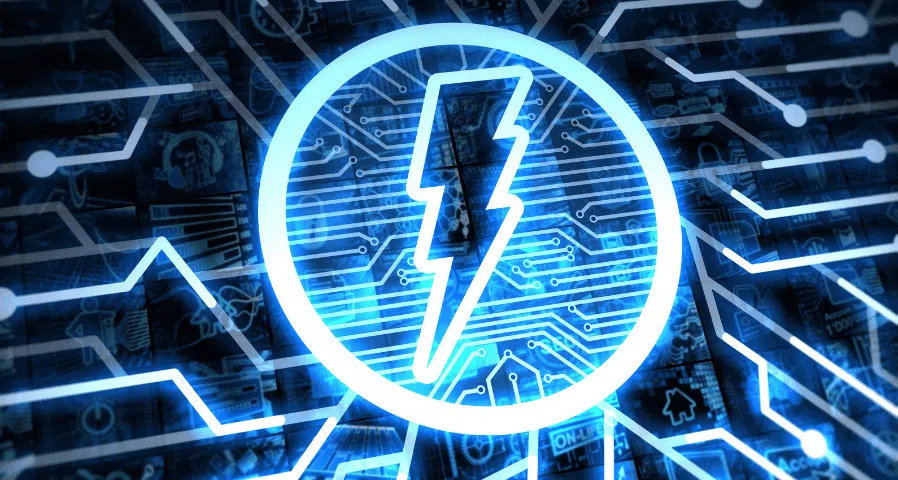How Facility Managers Can Cut Energy Costs Without Sacrificing Performance
Discover how facility managers can cut energy costs effectively to enhance operational efficiency and save resources.

Businesses are striving for new ways to reduce their energy consumption and cut costs. There is a myriad of new technological advancements that allow property owners and managers to transform the way their facility operates. Smart grids incorporate sustainable energy management with intelligent building controls to lower electricity usage. As we move deeper into 2025, understanding how smart grids work and how they differ from the traditional grid is essential for both consumers and energy providers.
A smart grid is a modern electricity network that combines advanced digital technology with traditional infrastructure to create a more reliable, efficient, and responsive system. It uses smart meters, sensors, and automation to enable real-time data exchange between energy providers and consumers. This allows for better management of electricity flow, quicker response to outages, and greater integration of renewable energy sources such as wind and solar.
When disruption, like a power outage, occurs, smart grids can reroute power automatically using self-healing technology, minimizing the impact on businesses. Additionally, they support decentralized energy production, allowing consumers to not only use energy but also contribute back to the grid.
The differences between smart grids and traditional grids are both technical and functional. Traditional grids lack the additional communication that smart grids have. Electricity flows from the utility provider to your building without any feedback, meaning you won’t know how much energy is being used until the monthly bill comes in. Should issues arise in energy usage, property owners won’t be able to act as quickly as they will with a smart grid,
In contrast, smart grids offer:
This enhanced functionality leads to a more stable, cost-effective, and environmentally friendly energy network.
Smart grids offer a range of benefits to both consumers and utilities:
Despite the benefits, transitioning from a traditional grid to smart grid involves a number of challenges. These include financial, technical, and social obstacles—but each has a corresponding path forward.
Smart grids require investment in sensors, smart meters, data systems, and grid automation tools. This can be particularly burdensome for smaller utilities and rural areas. However, financial incentives are available from a federal level all the way to the local area through programs within your city, state, or utility company. This will help maximize savings and make products or installations more reasonable.
With increased data collection comes heightened concerns about how that data is stored, used, and protected. Unauthorized access could jeopardize both user privacy and grid stability. Cybersecurity is always an ongoing threat to businesses. By incorporating certain protocols, such as encrypting data and ongoing staff training, you can mitigate the risk and protect your privacy.
Smart grid components often come from various manufacturers, leading to compatibility issues and fragmented systems. However, standardizing communication protocols and hardware specifications across the industry can foster interoperability. Collaboration among utilities, technology providers, and regulators is key to creating unified solutions.
Public understanding of smart grids is still limited. Without informed participation, many smart grid features, like time-of-use pricing or demand response, go underused. Consumers can take charge by learning how their utility’s smart grid programs work. Start by checking if your electric provider offers tools like smart meters, mobile apps, or energy-saving programs.
Several innovative technologies support the backbone of today’s smart grids:
Together, these technologies create a responsive, self-correcting grid capable of adapting to the complex demands of modern energy use.
Smart technology is gaining popularity in commercial properties to streamline operations, reduce energy consumption, and improve the workplace environment for employees. Smart grids will add additional insights into how energy is being used and new ways to curb costs. Large commercial properties have high energy demands, making them ideal candidates for smart grids and new energy solutions.
Smart grids can be integrated with other smart technology, such as thermostats, sensors, lighting, and more. This helps managers gain insights into where high energy demands are and new strategies to reduce consumption. These insights can include lighting during off-hours or HVAC inefficiencies. They even allow an easier transition for on-site renewable energy systems, like solar energy, to reduce reliance on utilities.
A practical example of smart grid technology in action is DTE Energy’s ongoing upgrade across Michigan, including major installations in Detroit and Wayne County. As of late 2024, DTE has deployed hundreds of smart grid devices and successfully prevented over 9,000 power interruptions, keeping the lights on for customers during 3.6 million minutes of potential downtime.
DTE’s plan includes:
DTE aims to fully automate its grid by the end of 2029. This smart grid rollout is already showing measurable benefits, creating a more resilient and responsive energy system for Michigan residents.
Smart grids help property owners take their energy management to the next level by improving efficiency and having real-time updates while monitoring electricity use. This transformation is key to an energy-efficient future. To learn more, speak with one of our specialists. Call 610-558-9773, email [email protected], or schedule a call that fits your needs by clicking the button below.